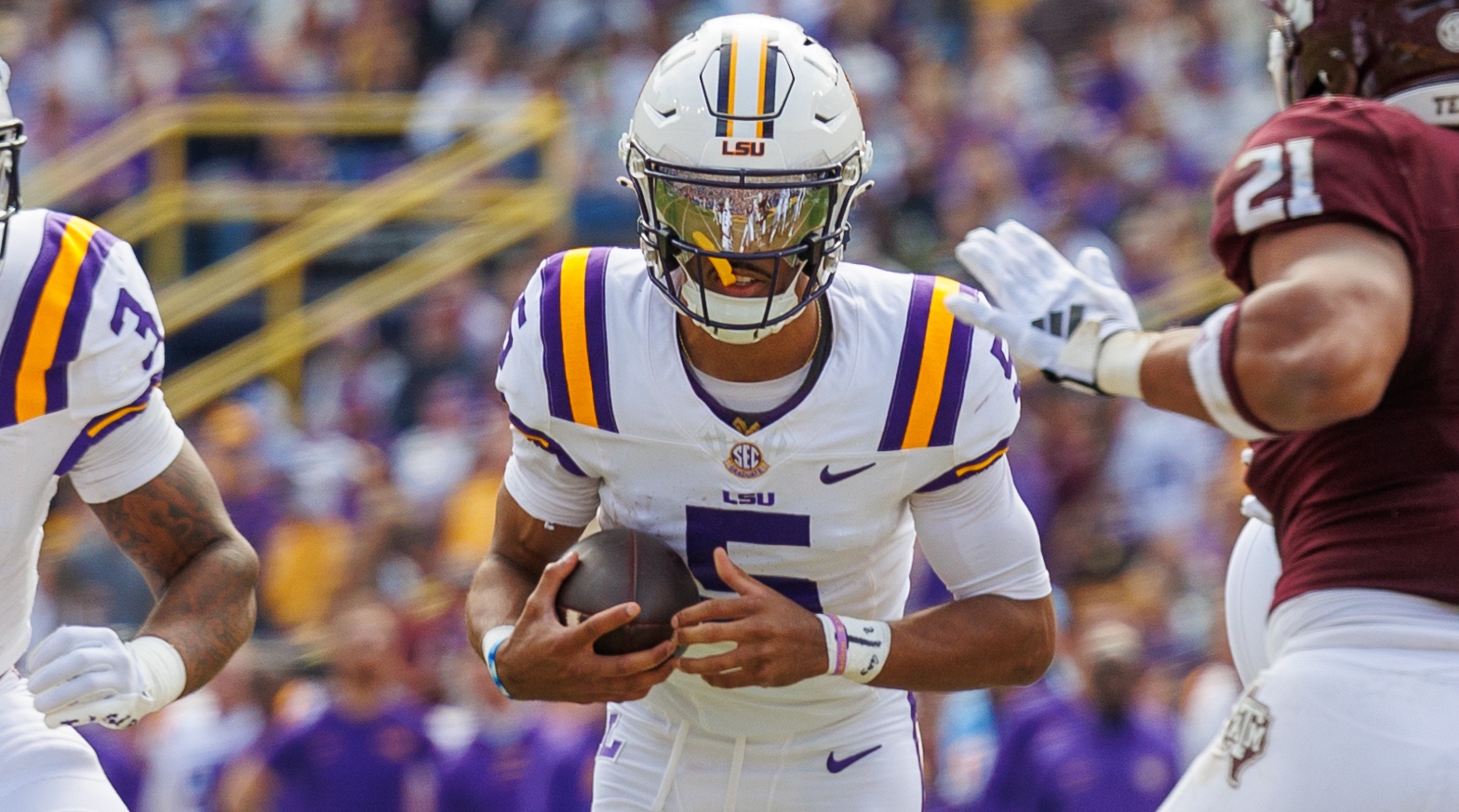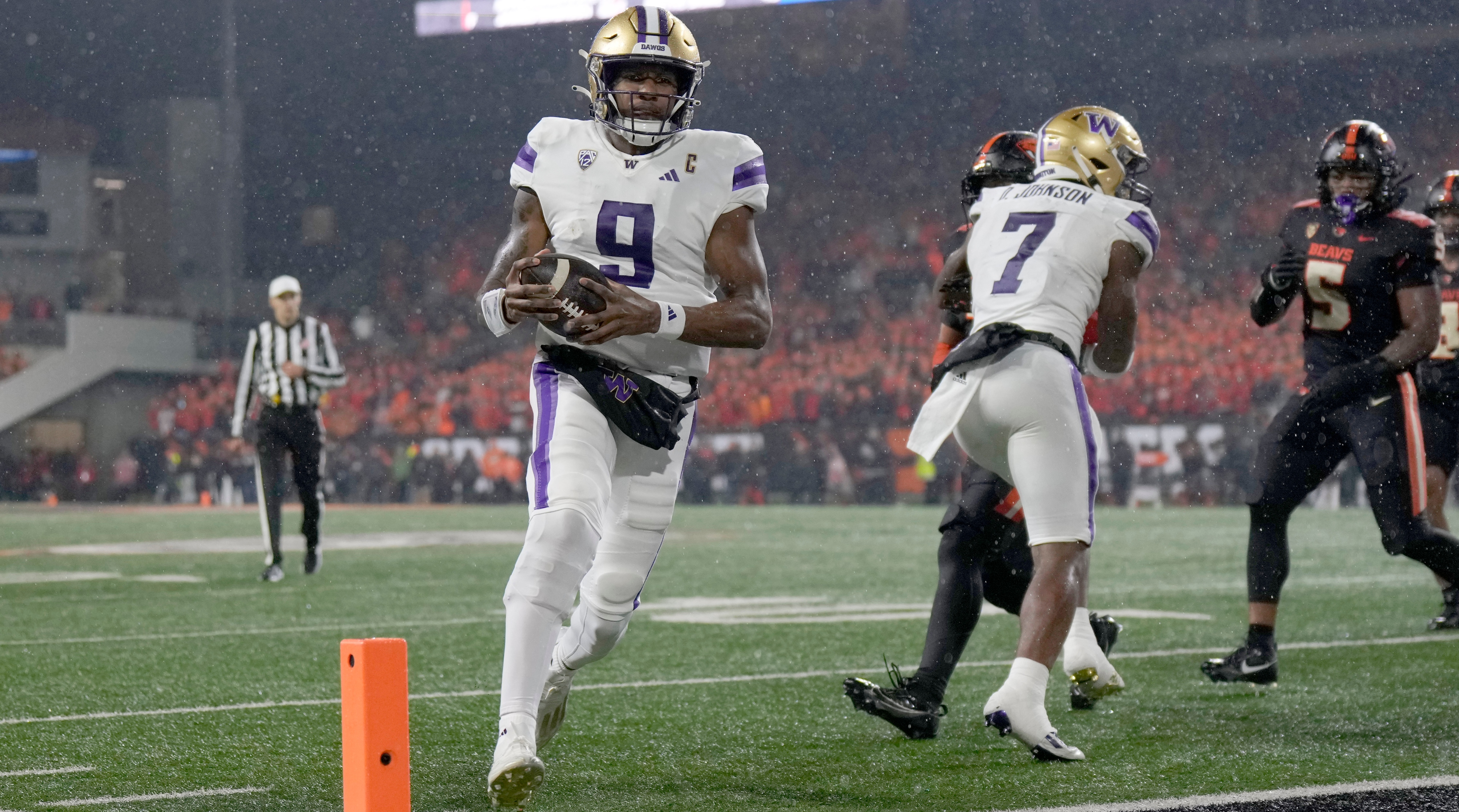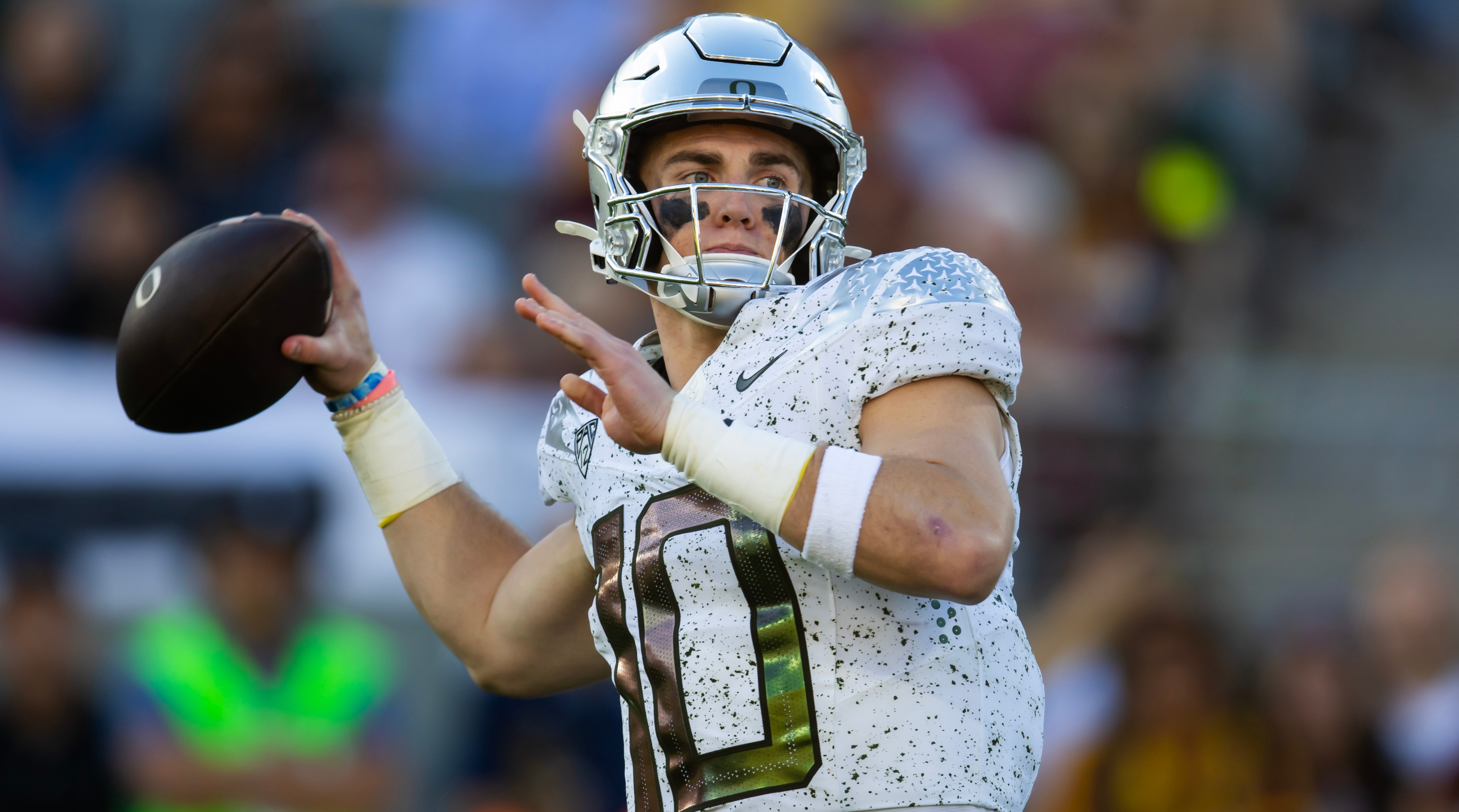Heisman Trophy 2023 Finalists Are Testaments to Consistency at Quarterback

The large majority of quarterbacks who transfer do so with immediate playing time in mind. And, yeah, NIL money. This is how the modern market works in college football. Both players and coaches are looking for the quick fix.
But one look at the 2023 Heisman Trophy finalists tells you that the second season after a transfer is often the bigger payoff. Jayden Daniels, Michael Penix Jr. and Bo Nix all started last year as immediately eligible transfers, and all played well. Then this year, they played great.
While the Heisman finalist group is emblematic of the transfer portal era, it also is a testament to maturity, patience and year-over-year growth.

Daniels’s numbers skyrocketed in his second season at LSU after starting his career at Arizona State. His pass efficiency rating jumped from 144.54 to 208.01, which currently is on pace to break the NCAA single-season record held by Grayson McCall. Daniels is producing 140 more yards of total offense per game in 2023 than he did in ’22.
At Oregon, Nix improved his efficiency from 165.65 (seventh nationally) to 186.24 (second) year-over-year. He’s thrown for 42 more yards per game, though his rushing numbers have decreased by 22 yards a game.
Penix is not throwing for as many yards per game this season at Washington as he did last year, but his efficiency has gone up from 151.29 to 161.43. He’s passed for more touchdowns, more yards per attempt and has a higher completion percentage this season. Also of note: His team is undefeated and in the College Football Playoff.
Among previous Heisman winners who transferred, career arcs were often similar to the above players. Joe Burrow blew up in his second season at LSU after coming in from Ohio State. Baker Mayfield won the trophy in his third season at Oklahoma after being at Texas Tech. Kyler Murray didn’t get on the field much in his first year as a Sooner thanks to Mayfield, then won the award his second year.
(The same cannot be said for Caleb Williams, who backslid this season at USC. However, his stellar 2022 performance came in his second season under Lincoln Riley; Williams changed schools but didn’t change offenses or coaches.)
For all three Heisman finalist QBs, early success at their original schools gave way to a stagnation that left all parties frustrated. Nix was a starter from his first game at Auburn, as was Daniels at Arizona State, with greatness predicted and expected for both. Yet Daniels’s efficiency rating declined annually in his three seasons at ASU, and Nix wound up being benched for the final three games of his third season with the Tigers.
Watch college football with Fubo. Start your free trial today.

For Penix, injuries clouded the picture throughout his time at Indiana. His last game for the Hoosiers was a shutout loss to Penn State in which he completed just 10 of 22 passes for 122 yards, no touchdowns and an interception. He left the game in the third quarter with an injured shoulder and didn’t play in the last seven games of the ’21 season.
All three quarterbacks badly needed a change of scenery, and all chose wisely in linking up with first-year coaches in new parts of the country, far away from where their careers hit crossroads. Daniels landed with Brian Kelly, an established offensive expert, and Penix did the same with Kalen DeBoer in Seattle. Nix went with Dan Lanning to Oregon, but the bigger draw there probably was then coordinator Kenny Dillingham, who had been the OC at Auburn when Nix was riding high as a freshman.
All three QBs faced major questions about whether they could recapture their best form. All three answered those questions emphatically last year, then faced decisions about whether to enter the draft or stay in school one more year. All three then improved their performance and helped their draft stock this year.

Who will win the Heisman? Maybe none of the QBs, although Ohio State receiver Marvin Harrison Jr. would seem to be a long shot. He might be the best player of the four and almost certainly will be drafted ahead of them all in the spring, but his numbers did not blow away those of other receivers nationally—he’s ninth in receiving yards (1,211) and in a four-way tie for second in touchdown catches (14). When Alabama star DeVonta Smith won it in 2020, he led the nation in receiving yards and touchdown catches by wide margins.
Statistically, Daniels had an overwhelming year. In addition to being poised to potentially break the single-season efficiency record, his 412.2 yards of total offense per game lead the nation by 74 yards and his 10.71 yards per play is also on pace to break the NCAA record held by Murray at 10.4.
That should trump the three defeats LSU endured this season. The award has often boiled down to the best players on teams that contend for the national championship—which means teams with one or zero losses—but there is precedent for individual brilliance to be rewarded. Most recently, Robert Griffin III (2011) and Lamar Jackson (‘16) won the Heisman on three-loss teams.
The quarterbacks who assemble in Manhattan this weekend are emblematic of their position in the modern era: They’re old (Penix and Nix are 23, and Daniels will be Dec. 18), and they’re at their second school. But most of all, they stuck around as long as they could as college players, polished their craft and got better. The reward is a coveted Heisman finalist designation.
